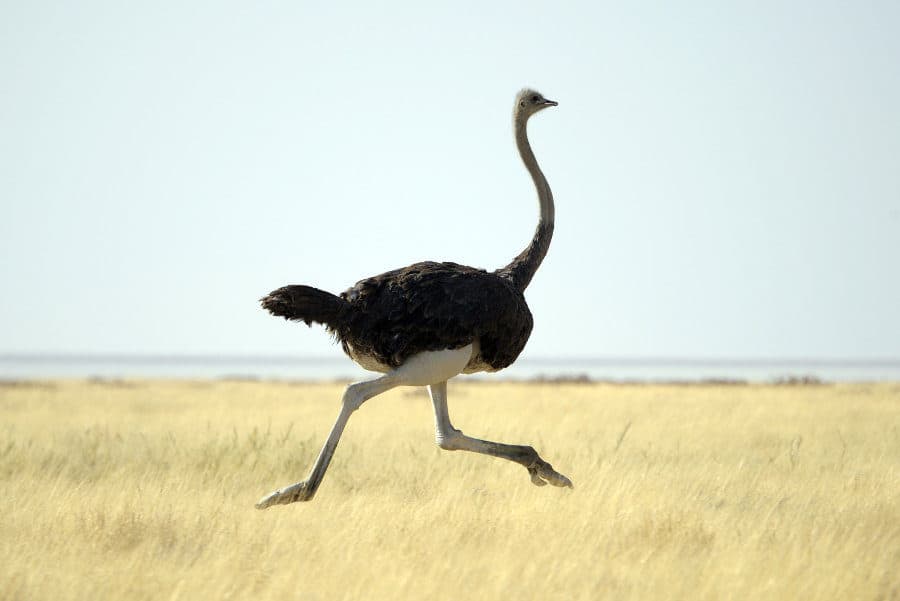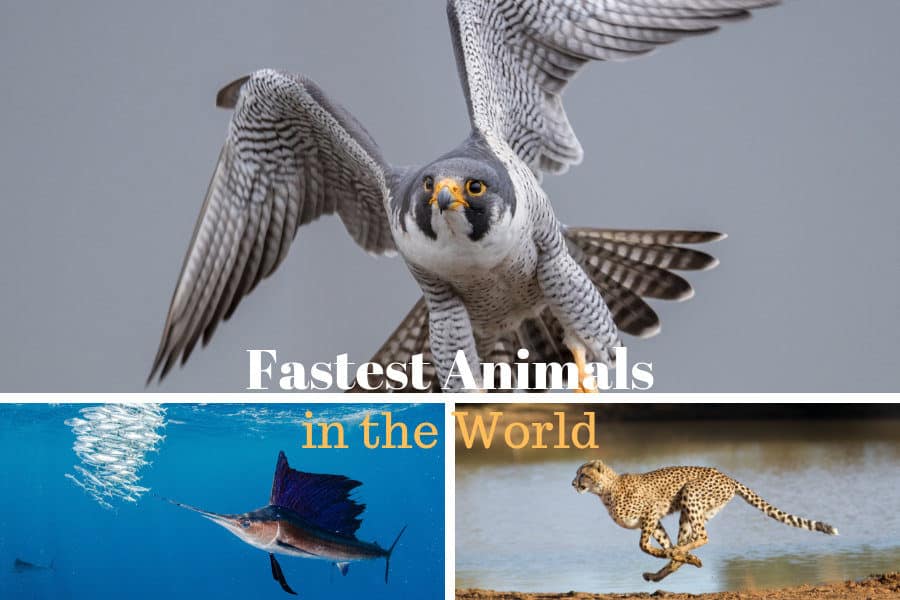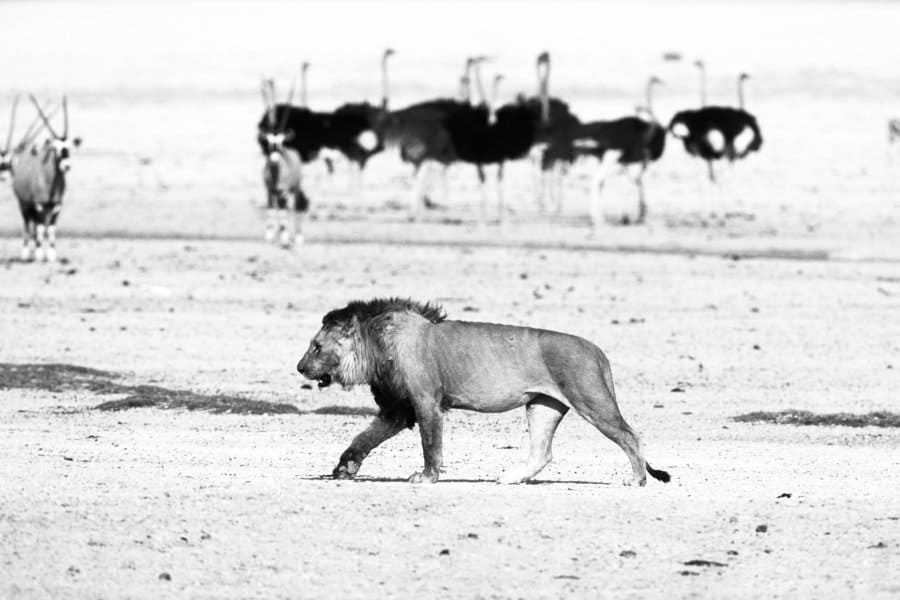Watch out, get out of the way, and see how fast an ostrich can run!
With its long legs an ostrich can run at 70 km/h! That’s an incredible 45 mph and makes ostrich one of the fastest animals on the African savannah.
But that’s just the start of the story. Ask how fast can an ostrich run and you must also ask how and why an ostrich can run so fast. The science is incredible, as this article will explain.
How Fast Can An Ostrich Run?

Ostrich have a top speed of 70 km/h (45 mph). They can cover five metres in a single stride!
Even more impressively, ostrich can maintain a steady 60 km/h over enormous distances. They can run a 42 km Olympic marathon in just 40 minutes!
With their long protruding necks and great round bodies, ostrich are one of the world’s most distinctive birds.
They are giants of the savannah. Standing at more than 2.5 metres and weighing over 100 kg, ostrich are comfortably the largest flightless bird native to Africa.
Two different ostrich species inhabit Africa and both of these can run very fast. Common ostrich are the most common (unsurprisingly) and there were four subspecies.
Of these, North African ostrich are critically endangered, Arabian ostrich are now extinct, and Masai ostrich just about hang on in Kenya and Tanzania.
South African ostrich are native to Southern Africa and are the most common of these birds. Over 90% of the world’s ostrich are found in the South African Karoo.
Somali ostrich are a vulnerable species native to Somalia, Ethiopia and Kenya. They are smaller than common ostrich and can also reach top speeds of 70 km/h and faster.
Why don’t ostrich fly?
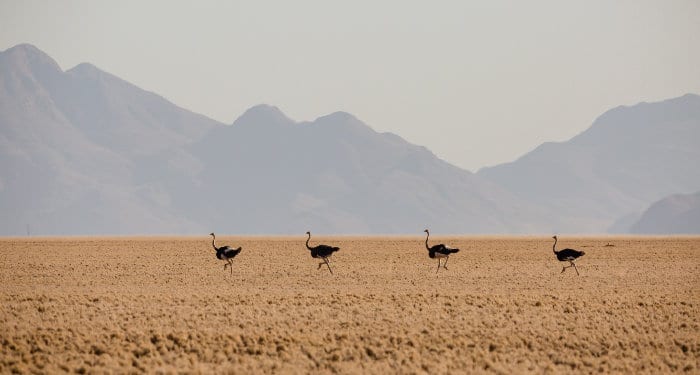
Ostrich are flightless birds. Many people believe that ostrich cannot fly because they are too heavy. This is true, but ostrich were never this heavy.
These birds have been around for millions of years. In fact, they are one of the oldest African animals.
When dinosaurs ruled the world there wasn’t much space for ostrich. They were much lighter back then and had the ability to fly. Then the dinosaurs were wiped out and there was all this extra space for ostrich to run around.
Big flightless birds are scattered around the Southern Hemisphere. Ostrich are genetically similar to emu in Australia and rhea in South America.
There are many genetic similarities between ostrich and kiwi birds from New Zealand, and the giant Madagascan elephant bird that is now extinct.
All these birds share a common ancestor that flew around the world. Each evolved independently and lost the ability to fly for different reasons.
Over millions of years ostrich adapted to extra space on the African savannah.
They wandered around eating all the vegetation that was previously consumed by dinosaurs.
They grew fat and heavy from the extra food and eventually became too large for their wings to carry them.
How Do Ostrich Run So Fast?
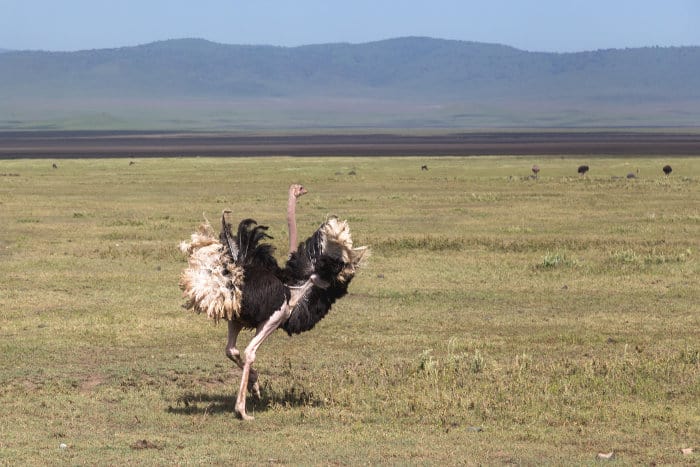
Using their wings
Humans have tailbones, that redundant bone at the bottom of our spine that doesn’t have any function. We have tailbones because we evolved from our primate ancestors who had tailbones.
Ostrich don’t fly but they still have wings. How fast an ostrich can run is all about these wings. With a span of more than two metres, ostrich use their wings to steer and balance themselves at high speed.
Just like an airplane, subtle wing movements help an ostrich maintain its balance when running at high speeds.
Humans will eventually lose their tailbones. It’s part of evolution. But ostrich won’t lose their wings, because without wings they can only run fast in a straight line.
Elastic legs

How fast can an ostrich run? Well, ostrich can cover up to five metres with a single stride! Their light legs bounce across the African savannah as both feet leave the ground at the same time.
Leopards and lions have thick leg muscles to help them run fast. Ostrich are built similar to cheetahs, the fastest land mammal. They have long slender legs designed around balance and acceleration.
Whether Usain Bolt or a tiny tortoise, the science behind running speed is the same. You can run faster by increasing either the length of your stride or the frequency of your steps.
Longer legs mean a longer stride and ostrich have the longest legs of all flightless birds.
All the muscle in their legs is located close to their body. If ostrich are compared to humans, their anatomy is an incredibly powerful upper thigh and buttocks, but tiny calf muscles.
Ostrich can swing their legs faster than most other animals because their leg muscles are closer to their bodies. These muscles provide power while long light legs give them distance.
A perfect centre of gravity
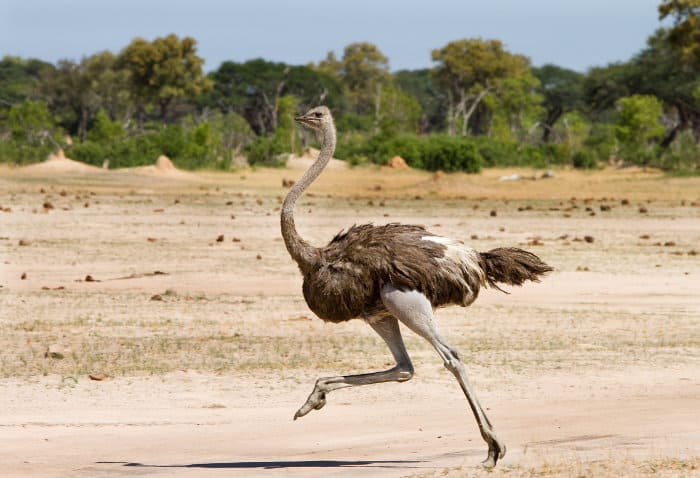
These flightless birds do not look in optimal shape for running.
Surely that big bouncy round belly is a hindrance to speed?
Actually, no.
Ostrich can keep all their vital organs safe and secure under their wings, without hindering their long runners legs.
All birds have an exceptionally well positioned centre of gravity that enables incredible maneuverability. Just watch how a bird lands effortlessly on any perch.
Ostrich are perfectly proportioned as their centre of gravity is between their long legs and wings. So whatever speed they run, and however much they appear to be out of control, they are always perfectly balanced.

When we run our leg muscles propel us forward. However, our leg muscles use up lots of energy in keeping us straight.
The best long distance Olympic runners are those that appear to run effortlessly. They use most of their energy to move forward.
Most of us are not Olympian runners. We tire easily because our muscles have to keep us going in a straight line!
Ostrich have an incredibly efficient approach. They can use all their muscle power to move forward because their centre of gravity keeps them perfectly balanced.
That’s why an ostrich can run at 60 km/h over an incredibly long distance.
Why Do Ostrich Run So Fast?
Now you know how fast an ostrich can run. But why do ostrich run so fast?
Escaping predators

Ostrich can run at 70 km/h. That top speed is similar to many African antelope, as you can see in this list of Africa’s fastest antelope.
70 km/h is a similar speed to some of the ostrich’s predators, suggesting that Mother Nature and evolution is also perfectly in balance. Lions can run at 80 km/h while leopards only reach 60 km/h.
So we can theorise that ostrich run fast so they can escape their predators. After all, if they can’t fly they need another means of escape.
So ostrich can run fast to avoid the biggest predators. They can also run long to avoid hungry hyenas.
Hyenas and wild dogs chase their prey over long distances, running it down to exhaustion. But even hyenas and wild dogs don’t have the ostrich’s incredible combination of endurance and speed.
Fresh grazing pastures

Ostrich have adapted to live in harsh arid environments. So they must cover long distances in order to find food. Ostrich also run fast so they can easily find fresh grazing pastures.
Watching an ostrich run is an incredible sight. Tracking an ostrich over a long distance is one of the great highlights of an African safari. Often the safari vehicle can’t keep up as the ostrich run and run and run.
Many people see an ostrich and think what a stupid looking animal! But ostrich are one of the fastest animals on the African savannah and that is all because of their incredibly unique biology.
Hopefully you will see one running over the African plains in the near future!
